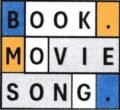THE SONG
Overview
Believe it or not The Sound of Silence did not begin as The Sound of Silence! As strange as it might sound, a 21-year-old kid named Paul Simon was used to composing his music in the bathroom as he could concentrate better in the dark while turning on the tap to run the water to hear its soothing sound and using the tiles to recreate the acoustic of an echo chamber.
The Sounds of Silence, yes, not The Sound of Silence, was born: a relatively straightforward chord progression in a minor key and lyrics full of imaginative visions with a deep sense of uneasiness throughout, not to mention neon gods and prophets’ words on subway walls.
Paul Simon was so ecstatic about the song that he rang immediately his partner in music, another kid from New York of the same age with the name of Art Garfunkel, to share that creation with him and find a record company.
They had known each other since school where they started to sing together and harmonise the lyrics of Simon and form a folk duo with a name that could not belong less to the world of music business: Tom & Jerry. They had little success before eventually getting signed by Columbia Records but, this time, as Simon & Garfunkel and a few years later in 1963.
The Sounds of Silence will be in their 1964 debut album, an all-acoustic one, called Wednesday Morning, 3 A.M, a commercial failure that prompted Paul Simon to move to London and release a solo album and Art Garfunkel to get back to his architectural studies at the university and forget about music.
It took an inspired Columbia staff producer, Tom Wilson, the very same person who produced artists the calibre of Frank Zappa and Bob Dylan among the others, to bring an electric guitarist and a rhythm section into the studio to add their part onto the original acoustic track and record what is known as The Sound of Silence which was released as a single and instantly became a hit in America thanks to the radio programmers. The only people that weren’t in that studio session were Paul Simon and Art Garfunkel who listened to the song on the radio and freaked out as their expanded version of The Sounds of Silence was played along with The Beatles’ Ticket to Ride, Bob Dylan’s Like a Rolling Stones and the Stones’s Satisfaction.
Tom Wilson had but a simple and ingenious idea: turning an acoustic song into a folk anthem! Simon & Garfunkel were back together with their career launched for ever; the song opens their 1966 second album Sounds of Silence, a beautiful work with another track in it that was used in The Graduate’s soundtrack, April Come She Will.
Apart from the fantastic melody, the astounding vocal harmonies and the modern arrangements, The Sound of Silence possesses an evergreen power in its lyrics, something that has no expiry date on it (keep in mind the most recent cover by the heavy metal band Disturbed dated 2015!): the silence has a sound, and it weighs heavily on people mostly on an emotional level so much so that they are unable to communicate, they talk without speaking and hear without listening, those same people that bow and pray to their artificial (neon) idols and gods.
Hello darkness, my old friend, I’ve come to talk with you again
The Sound of Silence features in the movie a total of three times: during the opening titles when an emotionless Benjamin comes off the plane and is transported through the conveyor belt like his own luggage, in our sequence described earlier around midway in the movie and then at the end of it in the last scene to highlight a sort of circular structure, at least soundtrack wise. This truly represents the importance of the song itself in The Graduate.
In addition to the already mentioned Scarborough Fair/Canticle and April Come She Will, Paul Simon composed another song, the only one specifically written for the movie with a good deal of insistence by Mike Nichols: Mrs Robinson. This as well would become another huge hit in numerous countries.
The Sound of Silence is written in the key of D♯ Minor which is a common choice in popular music; there is no change of key and no lyrical intro or outro, these two choices giving the music a solid and well renowned simplicity; the three most important chords, built off the 1st, 4th and 5th scale degrees, are all minor chords (D♯ minor, G♯ minor, and A♯ minor).
The song starts with a beautiful arpeggio, so the three notes of the Ebsus2 chord are played in succession and not simultaneously, and this gives the song an already interesting twist. Paul Simon with his acoustic guitar plays the figure twice before being joined by the arpeggio of chords of the electric guitar which is intentionally dissonant by building up tension to then dissolve into relaxing moments. This wonderful introduction is worth the whole song; not to mention the use of oblique motion in the harmonies, instead of the traditional diatonic third and sixth intervals: one voice, Paul Simon’s, stays lower while the other, Art Garfunkel’s, moves up and down by steps and leaps.
And this happens but within the first seven lines of the first stanza; bear in mind that in the whole song there are in total 5 stanzas, all composed by 7 lines and all equal: the first 2 verses or couplet describing the background of a scene (Hello darkness, my old friend / I’ve come to talk with you again), the second couplet progressing with the story (Because a vision softly creeping / Left its seeds while I was sleeping), the third one taking us to the climax of it (And the vision that was planted in my brain /Still remains) while eventually the last verse, a one-line refrain, finally introducing the long-awaited sound of silence, the star of the story, our man (Within the sound of silence).
After the first stanza, the rhythmic section kicks in with great energy: drums, bass and two electric guitars with excellent fills and a bluesy touch, too. All the ingredients for a massive hit were there!
We have already mentioned how important here the lyrics are right from the first couplet where the old friend darkness is introduced up to the refrain that talks about the silence and its sound, two apparently contradictory terms that will prove to be not as much contradictory as the silent raindrops falling. Notable of mentioning remains nowadays the verse Silence like a cancer grows for its extraordinary intensity and prophetic meaning in a digital era overwhelmed by technology and mass-produced products that deeply and increasingly enhance our inability to share feelings and thoughts with each other, in other words, to communicate.
It is worth noting that, among the numerous cover versions around, the one from Disturbed does really stand out in terms of vocal range and an impressive clean tone of the lead singer David Draiman who gives the song a deep sense of anger and rebelliousness. The song is in the 2015 album called Immortalized. LINK
Then Pat Metheny comes along with his sublime interpretation of the Sound of Silence’s melody that, although we still and clearly recognise as it remains the centre of everything, represents a magical reinvention. It begins with an ancient and mysterious oriental tune brilliantly recreated by his 42-string Pikasso guitar to become more energetic and deeper with bass lines and chord strumming as the music progresses. The song is included in 2011 Metheny’s album titled What’s It All About, a collection of all covers. LINK
PLAY IT!
Normally classed as a song for beginners, The Sound of Silence is easy to play, but, if you want to sing along as well and imitate the Garfunkel’s harmonies, then it is a totally different story… LINK karaoke?
Here you can buy a digital sheet for guitar solo and give it a go by watching also a good variety of tutorials on YouTube LINK + LINK
The song that is used in the movie’s soundtrack and in our scene specifically was included in the album titled Sounds of Silence and published in 1966. Tom Wilson is rightfully credited as producer due to his wonderful intuition alongside Bob Johnston for the remainder of the tracks. The instrumental Anji, a very important song in the history of folk by Davey Graham, proves that Paul Simon is also a great guitar player. LINK
If you would rather listen to the original version that was titled The Sounds of Silence and not The Sound of Silence, then you will need to listen to the duo’s debut album, a quite interesting work in the tradition of folk, Wednesday Morning, 3 A.M. which was published in 1964. Tom Wilson is the sole producer here. LINK

